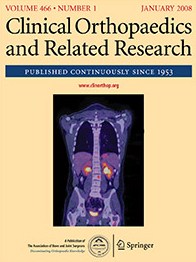
ARTHROPLASTY
Patient-specific instruments may not be applicable to all total knee arthroplasty cases
This report has been verified
by one or more authors of the
original publication.
Clin Orthop Relat Res. 2013 Dec;471(12):3988-95. doi: 10.1007/s11999-013-3206-1. Epub 2013 Aug 2
100 patients were randomized to total knee arthroplasty with either patient-specific instrumentation or conventional instrumentation. The purpose was to determine if patient-specific guides offered improved postoperative alignment over conventional methods. The results from the analysis indicated that component alignment was similar between the two treatment groups, but a large percentage (16%) of the patient-specific group requirement intraoperative conversion to conventional instruments due to a large discrepancy (>3°) in femoral component rotation.
Unlock the full ACE Report
You have access to {0} free articles per month.Click below to unlock and view this {1}
Unlock NowCritical appraisals of the latest, high-impact randomized controlled trials and systematic reviews in orthopaedics
Access to OrthoEvidence podcast content, including collaborations with the Journal of Bone and Joint Surgery, interviews with internationally recognized surgeons, and roundtable discussions on orthopaedic news and topics
Subscription to The Pulse, a twice-weekly evidence-based newsletter designed to help you make better clinical decisions
Exclusive access to original content articles, including in-house systematic reviews, and articles on health research methods and hot orthopaedic topics
Or upgrade today and gain access to all OrthoEvidence content for just $1.99 per week.
Already have an account? Log in


Subscribe to "The Pulse"
Evidence-Based Orthopaedics direct to your inbox.
{0} of {1} free articles
Become an OrthoEvidence Premium Member. Expand your perspective with high-quality evidence.
Upgrade Now













































































